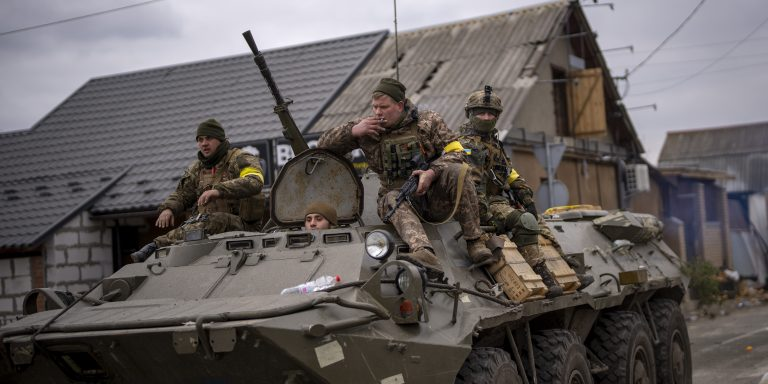
The Ukrainian military has benefited significantly from security cooperation efforts of the U.S. and its allies, which have provided Kyiv with training and weapons that have proved crucial so far in bleeding Russian forces.
In addition to training provided by the U.S., the U.K. and Canada have also provided training, while a plethora of Western and NATO countries have provided supplies, equipment, weaponry, and ammunition.
Since 2014, the U.S. has supplied Ukraine with more than $2.5 billion in military assistance, including supplying the Ukrainian military with everything from counter-mortar radars to Javelin anti-tank missiles.
According to a recent report from Yahoo News, secret support provided by CIA paramilitaries was indispensable to Ukrainian forces, including snipers and other elite units who benefited from this covert action training program.
Many analysts covering Russia’s invasion of Ukraine have been shocked as much by the former’s pitiful military performance as they have by the latter’s success. The Ukrainian military of 2022 stands in stark contrast to the Ukrainian military of 2014. The difference, in addition to the remarkable grit and determination of those fighting against the Russians, is the transformation of Ukraine’s military during the eight years between Russia’s illegal annexation of Crimea and its most recent invasion, which began in earnest on February 24. The United States engages in security cooperation efforts and programs to build the partner capacity of U.S. allies all over the world. Every one of these partnerships is beset by certain challenges and setbacks, with instances of success less common than failures. What is difficult, if not impossible to account for, and something available in droves in the case of Ukraine, is the will to fight. That cannot be bestowed by an external ally, but when marshaled effectively, in combination with the necessary contextual factors that enable hope for success, can be combined with robust security cooperation to make a lasting impact on the battlefield.
The U.S. came under immense criticism and Congressional scrutiny following the rapid collapse of the Afghan government and military in August 2021. In that case, twenty years of funding, training, and the provision of equipment seemingly disappeared over the course of the Taliban’s multi-week offensive, which saw Afghan forces abandon their fighting positions, allowing the insurgents to ransack city after city before seizing the capital, Kabul. However, in this instance, the U.S. had already publicized a deadline for withdrawal, and security and intelligence analysts broadly foretold of a Taliban takeover, undercutting motivations for viable sustained combat by the Afghan military. With Ukraine, years of security cooperation have clearly yielded significant results, with Ukraine performing valiantly in battle against one of the largest militaries in the world. Ukraine’s military readiness, ability to adapt on the battlefield, and integration of light infantry with anti-tank weapons, drones, and artillery fire is tangible proof of the benefits of Western security cooperation efforts. Ukrainian combat experience in the Donbas has also hardened its forces and given them a level of familiarity with how the Russians operate. In addition to training provided by the U.S., the United Kingdom and Canada have also provided training, while a plethora of Western and NATO countries have provided supplies, equipment, weaponry, and ammunition.
Since 2014, the U.S. has supplied Ukraine with more than $2.5 billion in military assistance. This assistance has included training and equipping the Ukrainian military, supplying everything from counter-mortar radars to Javelin anti-tank missiles. Ukraine was at the center of the first impeachment of former U.S. President Donald Trump, who attempted to extort Ukrainian President Volodymyr Zelenskyy by threatening to withhold crucial military assistance unless Zelenskyy agreed to help Trump dig up dirt on his political rivals, something Zelenskyy flatly refused to do. Several officials in the Trump administration attempted to justify Trump’s actions, labeling the Ukrainian government as corrupt and its military as ramshackle and overmatched. Fast forward to the current day, and the U.S. and its allies have opened the floodgates, sending Ukraine advanced weaponry as well as Soviet-made air defense systems, including the SA-8, that were secretly acquired years ago as part of a long-running clandestine project. At a meeting yesterday in Brussels, Belgium, NATO leaders pledged to provide Ukraine with even more weaponry and training, offering reassurance that there was no easing up on taking the fight to Russia more than a month into the conflict.
According to a recent report from Yahoo News, secret support provided by paramilitaries from the Central Intelligence Agency (CIA) was also indispensable to Ukrainian forces, including snipers and other elite Ukrainian forces who benefited from this covert action training program. The results are evident on the battlefield, where Ukrainian forces have killed between 7,000 and 15,000 Russian troops, according to some estimates, including numerous high-ranking officers, among them multiple Russian generals. The program also trained Ukrainians on operational security, covert communications, and other high-end technology to help evade surveillance and limit digital signatures that could make them vulnerable to Russian electronic warfare. Indeed, after witnessing how the conflict has unfolded over the first four weeks, Ukraine is turning out to be a potential model for security cooperation assistance, highlighting the need for follow-on studies THAT attempting to unearth exactly what has made Kyiv so successful in confronting Russia.
